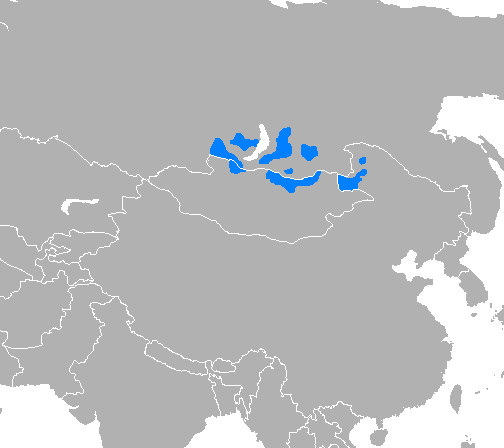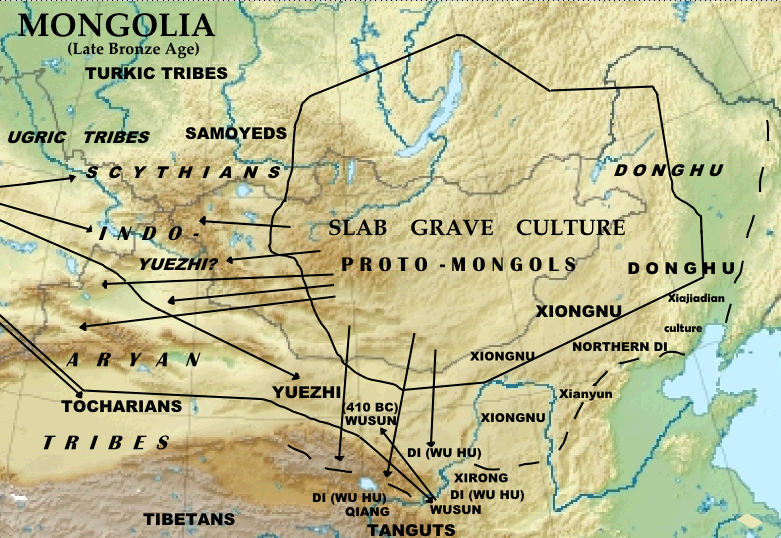|
State Of Buryat-Mongolia
The State of Buryat-Mongolia ( Buryat: ''Буряад-Монгол улас'' ''ᠪᠤᠷᠢᠠᠳ ᠮᠣᠩᠭᠣᠯ ᠪᠤᠯᠤᠰ'') was a buffer Buryat-Mongolian state,''Бабаков В. В.'', Бурнацком - Бурнардума: первый опыт национально-государственного строительства в Бурятии, Улан-Удэ, 1997 г. during the Russian Civil War. It was established according to by the first All-Buryat congress on 25 April 1917. The main government body was Burnatskom, the Buryat National Committee. After the collapse of the Soviet regime under the advance of the Whites and the Czechoslovakian division, the State of Buryat-Mongolia was recognized by the Soviets in 1918, and later by Grigory Semyonov's Government of Transbaikalia. The state de facto ceased to exist after the formation of the Far Eastern Republic, which divided Buryat-Mongolia in two: 4 ''aimags'' became part of the Far Eastern Republic, ... [...More Info...] [...Related Items...] OR: [Wikipedia] [Google] [Baidu] |
Buryat Language
Buryat, or Buriat (; Buryat Cyrillic: , , ), known in foreign sources as the Bargu-Buryat dialect of Mongolian, and in pre-1956 Soviet sources as Buryat-Mongolian,In China, the Buryat language is classified as the Bargu-Buryat dialect of the Mongolian language. is a variety of the Mongolic languages spoken by the Buryats and Bargas that is classified either as a language or major dialect group of Mongolian. Geographic distribution The majority of Buryat speakers live in Russia along the northern border of Mongolia where it is an official language in the Buryat Republic and was an official language in the former Ust-Orda Buryatia and Aga Buryatia autonomous okrugs. In the Russian census of 2002, 353,113 people out of an ethnic population of 445,175 reported speaking Buryat (72.3%). Some other 15,694 can also speak Buryat, mostly ethnic Russians. Buryats in Russia have a separate literary standard, written in a Cyrillic alphabet. It is based on the Russian alphabet with thr ... [...More Info...] [...Related Items...] OR: [Wikipedia] [Google] [Baidu] |
Transbaikalia
Transbaikal, Trans-Baikal, Transbaikalia ( rus, Забайка́лье, r=Zabaykalye, p=zəbɐjˈkalʲjɪ), or Dauria (, ''Dauriya'') is a mountainous region to the east of or "beyond" (trans-) Lake Baikal in Far Eastern Russia. The steppe and wetland landscapes of Dauria are protected by the Daurian Nature Reserve, which forms part of a World Heritage Site named "The Landscapes of Dauria". Etymology The alternative name of the Transbaikal, ''Dauria'', derives from the ethnonym of the former inhabitants, the Daur people, whom Russian explorers first encountered in 1640. Geography Dauria stretches for almost 1,000 km from north to south from the Patom Plateau and North Baikal Plateau to the Russian state borders with Mongolia and China. The Transbaikal region covers more than 1,000 km from west to east from Lake Baikal to the meridian of the confluence of the Shilka and Argun Rivers. To the west and north lies the Irkutsk Oblast; to the north the Republic of Sak ... [...More Info...] [...Related Items...] OR: [Wikipedia] [Google] [Baidu] |
History Of Mongolia
Various nomadic empires, including the Xiongnu (3rd century BC–1st century AD), the Xianbei state ( AD 93–234), the Rouran Khaganate (330–555), the First (552–603) and Second Turkic Khaganates (682–744) and others, ruled the area of present-day Mongolia. The Khitan people, who used a para-Mongolic language, founded an empire known as the Liao dynasty (916–1125), and ruled Mongolia and portions of North China, northern Korea, and the present-day Russian Far East. In 1206, Genghis Khan was able to unite the Mongol tribes, forging them into a fighting force which went on to establish the largest contiguous empire in world history, the Mongol Empire (1206–1368). After the fragmentation of the Mongol Empire, Mongolia came to be ruled by the Yuan dynasty (1271–1368) based in Khanbaliq (modern Beijing) and administered as part of the Lingbei Province. Buddhism in Mongolia began with the Yuan emperors' conversion to and dissemination of Tibetan Buddhism. After collaps ... [...More Info...] [...Related Items...] OR: [Wikipedia] [Google] [Baidu] |
Transbaikal
Transbaikal, Trans-Baikal, Transbaikalia ( rus, Забайка́лье, r=Zabaykalye, p=zəbɐjˈkalʲjɪ), or Dauria (, ''Dauriya'') is a mountainous region to the east of or "beyond" (trans-) Lake Baikal in Far Eastern Russia. The steppe and wetland landscapes of Dauria are protected by the Daurian Nature Reserve, which forms part of a World Heritage Site named "The Landscapes of Dauria". Etymology The alternative name of the Transbaikal, ''Dauria'', derives from the ethnonym of the former inhabitants, the Daur people, whom Russian explorers first encountered in 1640. Geography Dauria stretches for almost 1,000 km from north to south from the Patom Plateau and North Baikal Plateau to the Russian state borders with Mongolia and China. The Transbaikal region covers more than 1,000 km from west to east from Lake Baikal to the meridian of the confluence of the Shilka and Argun Rivers. To the west and north lies the Irkutsk Oblast; to the north the Republic of Sa ... [...More Info...] [...Related Items...] OR: [Wikipedia] [Google] [Baidu] |
Irkutsk
Irkutsk ( ; rus, Иркутск, p=ɪrˈkutsk; Buryat language, Buryat and mn, Эрхүү, ''Erhüü'', ) is the largest city and administrative center of Irkutsk Oblast, Russia. With a population of 617,473 as of the 2010 Census, Irkutsk is the List of cities and towns in Russia by population, 25th-largest city in Russia by population, the fifth-largest in the Siberian Federal District, and one of the largest types of inhabited localities in Russia, cities in Siberia. Located in the south of the eponymous oblast, the city proper lies on the Angara River, a tributary of the Yenisei River, Yenisei, about 850 kilometres (530 mi) to the south-east of Krasnoyarsk and about 520 kilometres (320 mi) north of Ulaanbaatar. The Trans-Siberian Highway (Federal M53 and M55 Highways) and Trans-Siberian Railway connect Irkutsk to other regions in Russia and Mongolia. Many distinguished Russians were sent into exile in Irkutsk for their part in the Decembrist revolt of 1825, and t ... [...More Info...] [...Related Items...] OR: [Wikipedia] [Google] [Baidu] |
Lake Baikal
Lake Baikal (, russian: Oзеро Байкал, Ozero Baykal ); mn, Байгал нуур, Baigal nuur) is a rift lake in Russia. It is situated in southern Siberia, between the Federal subjects of Russia, federal subjects of Irkutsk Oblast, Irkutsk Oblasts of Russia, Oblast to the northwest and the Republic of Buryatia to the southeast. With of water, Lake Baikal is the world's List of lakes by volume, largest freshwater lake by volume, containing 22–23% of the world's fresh surface water, more than all of the North American Great Lakes combined. It is also the world's List of lakes by depth, deepest lake, with a maximum depth of , and the world's ancient lake, oldest lake, at 25–30 million years. At —slightly larger than Belgium—Lake Baikal is the world's List of lakes by area, seventh-largest lake by surface area. It is among the world's clearest lakes. Lake Baikal is home to thousands of species of Plant, plants and animals, many of them endemic to the region. ... [...More Info...] [...Related Items...] OR: [Wikipedia] [Google] [Baidu] |
Bolsheviks
The Bolsheviks (russian: Большевики́, from большинство́ ''bol'shinstvó'', 'majority'),; derived from ''bol'shinstvó'' (большинство́), "majority", literally meaning "one of the majority". also known in English as the Bolshevists,. It signifies both Bolsheviks and adherents of Bolshevik policies. were a far-left, revolutionary Marxist faction founded by Vladimir Lenin that split with the Mensheviks from the Marxist Russian Social Democratic Labour Party (RSDLP), a revolutionary socialist political party formed in 1898, at its Second Party Congress in 1903. After forming their own party in 1912, the Bolsheviks took power during the October Revolution in the Russian Republic in November 1917, overthrowing the Provisional Government of Alexander Kerensky, and became the only ruling party in the subsequent Soviet Russia and later the Soviet Union. They considered themselves the leaders of the revolutionary proletariat of Russia. Their bel ... [...More Info...] [...Related Items...] OR: [Wikipedia] [Google] [Baidu] |
February Revolution
The February Revolution ( rus, Февра́льская револю́ция, r=Fevral'skaya revolyutsiya, p=fʲɪvˈralʲskəjə rʲɪvɐˈlʲutsɨjə), known in Soviet historiography as the February Bourgeois Democratic Revolution and sometimes as the March Revolution, was the first of two revolutions which took place in Russia in 1917. The main events of the revolution took place in and near Petrograd (present-day Saint Petersburg), the then-capital of Russia, where long-standing discontent with the monarchy erupted into mass protests against food rationing on 23 February Old Style (8 March New Style). Revolutionary activity lasted about eight days, involving mass demonstrations and violent armed clashes with police and gendarmes, the last loyal forces of the Russian monarchy. On 27 February O.S. (12 March N.S.) the forces of the capital's garrison sided with the revolutionaries. Three days later Tsar Nicholas II abdicated, ending Romanov dynastic rule and the Russia ... [...More Info...] [...Related Items...] OR: [Wikipedia] [Google] [Baidu] |
Outer Mongolia
Outer Mongolia was the name of a territory in the Manchu-led Qing dynasty of China from 1691 to 1911. It corresponds to the modern-day independent state of Mongolia and the Russian republic of Tuva. The historical region gained ''de facto'' independence from Qing China during the Xinhai Revolution. While the administrative region of Outer Mongolia during the Qing dynasty only consisted of the four Khalkha aimags (Setsen Khan Aimag, Tüsheet Khan Aimag, Sain Noyon Khan Aimag, and Zasagt Khan Aimag), in the late Qing period "Outer Mongolia" was also used to refer to the combined Khalkha and Oirat regions, as well as the directly-ruled Tannu Uriankhai. The region was subsequently claimed by the Republic of China, which had acquired the legal right to inherit all Qing territories through the Imperial Edict of the Abdication of the Qing Emperor, as an integral part of the state. Most of Outer Mongolia, however, was under the ''de facto'' control of the Bogd Khanate, which w ... [...More Info...] [...Related Items...] OR: [Wikipedia] [Google] [Baidu] |
Autonomy
In developmental psychology and moral, political, and bioethical philosophy, autonomy, from , ''autonomos'', from αὐτο- ''auto-'' "self" and νόμος ''nomos'', "law", hence when combined understood to mean "one who gives oneself one's own law" is the capacity to make an informed, uncoerced decision. Autonomous organizations or institutions are independent or self-governing. Autonomy can also be defined from a human resources perspective, where it denotes a (relatively high) level of discretion granted to an employee in his or her work. In such cases, autonomy is known to generally increase job satisfaction. Self-actualized individuals are thought to operate autonomously of external expectations. In a medical context, respect for a patient's personal autonomy is considered one of many fundamental ethical principles in medicine. Sociology In the sociology of knowledge, a controversy over the boundaries of autonomy inhibited analysis of any concept beyond relative a ... [...More Info...] [...Related Items...] OR: [Wikipedia] [Google] [Baidu] |
Aimag
An aimag (, ; xal, әәмг, ), originally a Mongolian word meaning 'tribe', is an administrative subdivision in Mongolia, Russia, and in the Inner Mongolia region of China. Mongolia In Mongolia, an aimag is the first-level administrative subdivision. The country currently has 21 aimags. The capital Ulan Bator is administrated as an independent municipality. During the Qing dynasty, Khalkha was subdivided into four aimags ( Setsen Khan Aimag, Tüsheet Khan Aimag, Sain Noyon Khan Aimag and Zasagt Khan Aimag). An aimag was further subdivided into "banners" (''khoshuu''). Each aimag had an assembly of the local nobility, commonly named "league" in English (''chuulga'' in Mongolian). This administrative structure was kept until 1930, when the current structure with smaller aimags, subdivided into sums, was introduced. Inner Mongolia In Inner Mongolia, aimags (in the Inner Mongolian context, usually translated as "league", from ) are a prefecture-level subdivision, fi ... [...More Info...] [...Related Items...] OR: [Wikipedia] [Google] [Baidu] |







